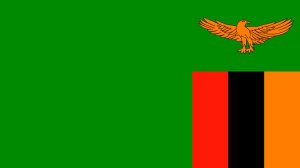Zambia aims to sign debt-restructuring deals with its remaining bilateral creditors by the third quarter, said Finance Minister Situmbeko Musokotwane, helping to bring closure to a years-long effort.
The copper-rich southern African nation has already finalised deals with France and Saudi Arabia, yet agreements with other creditor countries — including the largest, China — remain pending. That’s yet another reminder of the painstakingly slow progress that governments have made with debt workouts in the wake of the pandemic.
“Right now, those technical details are being worked out,” Musokotwane said in an interview from Washington. “So, hopefully some time in the middle of this year, third quarter of this year — hopefully latest — we can get that out of the way.”
Zambia was the first African nation to default after Covid-19 upended the global economy in 2020, followed by Ghana and Ethiopia. Finding agreement across a diverse set of creditors, ranging from State-owned Chinese banks to the Paris Club of mostly rich countries and bondholders, has taken years and faced many pitfalls.
Common Framework
The country restructured its debts using a set of guidelines known as the Group of 20 Common Framework, drafted to help poor countries to deal with unsustainable debt loads in the wake of the pandemic. Because it was the first to strike an agreement across diverse creditor groups, the government referred to its role as being a guinea pig for the process.
The end is finally in sight. The nation has concluded deals or reached agreement in principle for about 90% of the loans up for treatment, according to the government. It’s yet to sign final bilateral deals with the Export–Import Bank of China for $4.1-billion of loans, and about $1.5-billion in debt to Chinese lenders classified as commercial.
Moody’s Ratings earlier this month raised its outlook on Zambia’s debt, and the economy is forecast to expand by 6.6% — which would be the fastest pace since 2012.
Musokotwane sees copper production rising to a record 1-million tons this year from about 820 000 tons in 2024. The staple corn crop this year will allow for food self-sufficiency after last year’s drought required costly imports.
Still, the nation remains at a high risk of debt distress, the Ministry of Finance and National Planning said in a March 31 report. Even under the scrutiny of an economic program with the International Monetary Fund, public and publicly guaranteed debt stock last year increased to $28.7-billion — or 117.7% of gross domestic product — from $20.5-billion in 2020.
Zambia’s programme with the Washington-based lender is set to expire in October, and the government is in the final stages of discussions as to whether to extend it or pursue “some other form of relationship,” Musokotwane said. He spoke positively about his nation’s experience so far with the fund.
“The IMF program for us has worked very well,” Musokotwane said. “The IMF, they believed in our story — they backed us.”
Elections in 2026 may add a layer of complexity, as governments tend to want to increase spending to attract more votes. Under the program, Zambia has been precluded from taking on new non-concessional debt. Still, the government is in no rush to return to credit markets.
“It’s not within a year or two” that such discussions would take place, the finance minister said. “We want to make sure that the economic fundamentals are in place before we can go on that route.”
EMAIL THIS ARTICLE SAVE THIS ARTICLE FEEDBACK
To subscribe email subscriptions@creamermedia.co.za or click here
To advertise email advertising@creamermedia.co.za or click here











